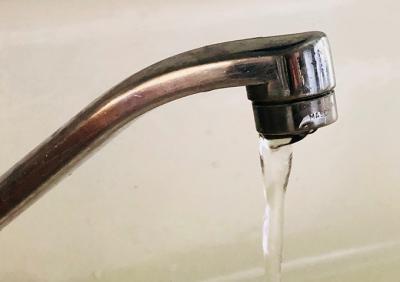Town Declares Water Emergency in Wainscott

The East Hampton Town Board has voted to authorize a state of emergency for Wainscott in order to direct money to residents whose wells were found to be contaminated by toxic perfluorinated chemicals, or PFCs.
Supervisor Peter Van Scoyoc announced at the board’s meeting on Tuesday that he and Councilman Jeff Bragman were co-sponsoring the state-of-emergency declaration. The move came weeks after Mr. Bragman first called on his colleagues to act swiftly to encourage the installation of in-home filtration where wells are contaminated. “We feel this is the most expedient way we can address those concerns,” Mr. Van Scoyoc said on Tuesday.
The money will come in the form of rebates of up to 90 percent of the cost of a point-of-entry water treatment system, to a maximum of $3,000, to ensure the safety of residents’ drinking water. Homeowners will have to submit an affidavit and invoice attesting to a system’s purchase and installation to be eligible for the rebate, Mr. Van Scoyoc said.
Qualifying residents who are interested in taking advantage of the program have been asked to contact the town’s purchasing department at 631-324-4183.
The Suffolk County Water Authority is to extend public water mains and connect them to residences throughout the hamlet, but by its estimate, construction would not begin before August and would take four to five months to complete. That project is forecast to cost $24.3 million, for which the town will issue bonds and seek grant funding to offset the cost to taxpayers.
A special meeting will be held on Monday at 6:30 p.m. at Town Hall for a public hearing on creation of a water supply district in the hamlet, a prerequisite to the water authority’s extension of public water. The district is to encompass much of the hamlet south of East Hampton Airport, a site suspected to be a source of the perfluorinated compounds, stretching from Industrial Road on the north to Town Line Road to the west, Daniel’s Hole Road and Georgica Pond to the east, and the Atlantic Ocean to the south.
According to an information sheet issued by the town, the cost of extending water mains will be repaid by property taxes on parcels townwide, excluding the villages. As an example, the document lists an estimated cost to taxpayers for a house assessed at $7,000, having a market value of $1.2 million, at $35 to $38 per year, representing an increase of less than 2 percent.
The portion of the debt attributed to the cost of connecting individual residences to the water main will ultimately be paid for by the particular property owner. Charges apportioned to the specific cost of connecting each house will be added to Wainscott residents’ tax bills, to be amortized over the expected 20-year life of the bond, according to the document.
With the Water Authority as lead agency, the town will jointly apply for an inter-municipal water infrastructure grant from the State Environmental Facilities Corporation. The grant could cover the lesser of $10 million or 40 percent of the projects’ cost.
Money could also come from the town’s community preservation fund: Assemblyman Fred W. Thiele Jr. and State Senator Kenneth P. LaValle have sponsored a bill to clarify that use of C.P.F. money for the water supply district would be acceptable. A $1 million allocation for Wainscott water infrastructure improvements, proposed by Deepwater Wind as part of a community benefits package in exchange for easements to land the transmission cable from its proposed South Fork Wind Farm at an ocean beach in Wainscott, could provide additional funding, should the town board and trustees agree to the proposal.
County Health Department officials announced the discovery of the toxic compounds in Wainscott wells in October, and the town has provided bottled water to affected residents since then while the board contemplated a more permanent response to the crisis. The town has expanded its initial survey of the area to encompasses some 400 residential properties.
The discovery of perfluorooctanesulfonic acid, or PFOS, and perfluorooctanoic acid, or PFOA, has left Wainscott residents anxious and angry. A Southampton lawyer has filed a lawsuit against the town and several chemical manufacturers on behalf of a Wainscott resident, asserting that the town is responsible for allowing the harmful chemicals, which are used in multiple products including fire-suppressing foam, to reach the water supply.
PFOS is a key ingredient in fabric protectors and stain repellents, and is found in other products including polishes, paints, varnishes, cleaning products, and carpets. Studies have associated higher levels of PFOS with increased risk of kidney disease.
PFOA is a coating used on cookware and in other consumer products. The federal Environmental Protection Agency issued a lifetime health advisory for PFOA after studies showed that high levels were associated with certain cancers, liver damage, thyroid disease, and problems for fetuses and breastfed babies, among other groups.
Together, the compounds have been used to make aqueous film-forming foam, or A.F.F.F., a component of firefighting foams. They are deemed emerging contaminants by federal and state officials, who have established a health advisory level for exposure of 70 parts per trillion.
According to the information sheet issued by the town, state and county health officials widened areas tested for PFC contamination after the chemicals were discovered in water in multiple locations on Long Island. Firefighting foam was cited as a source of those contaminations. The State Department of Environmental Conservation is working to determine the exact source of the contamination in Wainscott.
